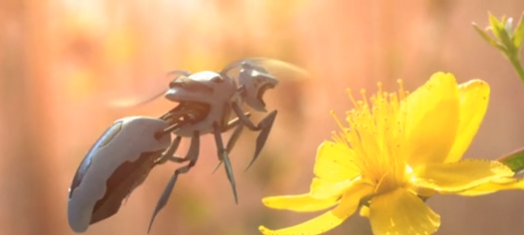
Most people that I know don’t really like bees (not even the bright, fluffy kind that make honey). Generally speaking, people think that bees are okay *in theory.* However, as soon as someone sees one *in reality,* they start screaming and running and trying to squish them with their shoe.
Admittedly, getting stung by and bee is not the most pleasant thing in the world, but bees are hardly the terrors that they are made out to be. In fact, bees are absolutely necessary to our survival. According to a Cornell University study, the value of honey bee pollination to U.S. agriculture is more than $14 billion annually. There are a number of crops that rely on honey bees — crops from nuts to vegetables, and as diverse as alfalfa, apple, cantaloupe, cranberry, pumpkin, and sunflower. All of these require pollinating by honey bees. And of course, it’s more than just the money. If we want to be able to actually eat any of these items, bees are pretty much a necessity (and I didn’t even mention the honey, which we wouldn’t have without bees).
So, just how necessary are they? Researchers estimate that one third of the food we eat would not be available if not for bees (for example, in the United Kingdom, about 70 crops are dependent on, or benefit from, visits from bees). In addition to this, bees pollinate an estimated 16% of all the flowering plant species (you might want to remember that the next time you lunge for your shoe).

In this science-fiction infomercial, the creators hope to underscore just how necessary bees are and to make people acknowledge that they are dying off all around the globe. What’s more, scientists are already working on robotic replacements. Scientists at Harvard University have already created the alpha version of these robotic bees, which are partially meant to help with artificial pollination in the absence of bees. Just keep in mind, this video is trying to make social commentary and prompt people to question their assumptions about humanity’s interference with other species and out role in the evolution and extinction of other organisms.
Image of the Harvard design below:
